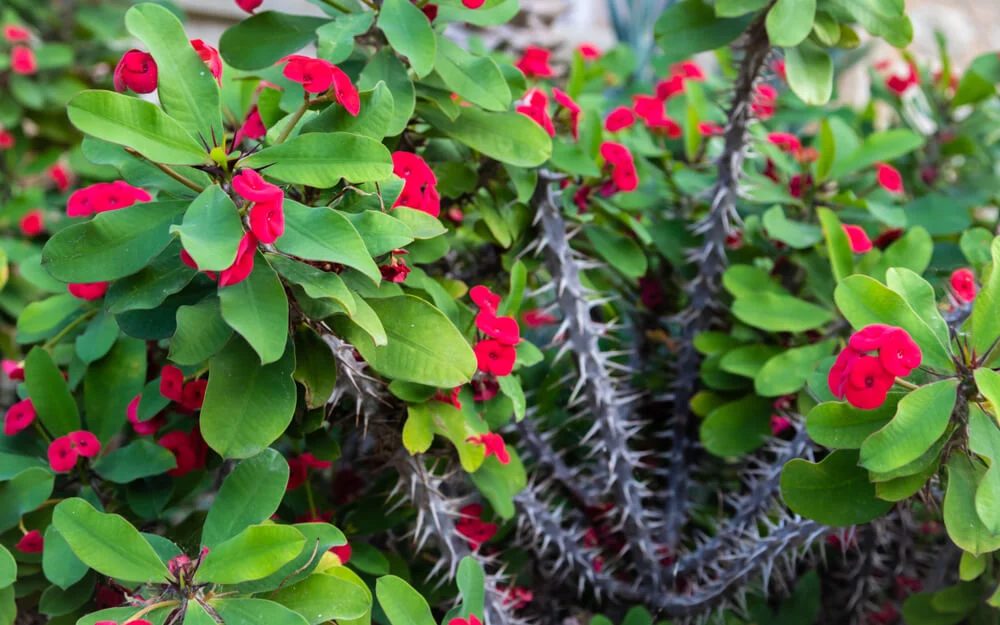
By Kate Roberts
While wandering around the Foellinger-Freimann Botanical Conservatory in Fort Wayne, Indiana, I stumbled across a plant called the crown-of-thorns plant, or the Christ plant. A beautiful succulent with a thorny stem and brightly colored flowers, it is the perfect picture of the Gospel. Life. Death. Pain. Beauty.
As we enter the Lenten season of the Church year, we often take the time to slow down, reflect on our sins, and await the glorious day of Easter, the day we celebrate Christ’s saving work for us through His suffering and death for our sins on the cross.
Yet, in our modern world, and especially as students, this time of year only seems to speed life up. High schoolers prepare for AP exams, make college decisions, and prep for state testing. College students make new living arrangements, choose next year’s classes, apply for graduation, and chase after summer internships. As winter makes its last hurrah as spring slowly creeps in, we add in soup suppers and Wednesday night Lent services. We try to focus on repentance. Prayer. Fasting.
In the pro-life world, 40 Days For Life begins. Christians of all denominations gather outside of Planned Parenthoods and other abortion facilities to hold prayer vigils, sidewalk counsel, and demonstrate their peaceful presence outside of buildings that hold so much spiritual darkness and pain. Mercy. Grace. Healing. Forgiveness. All are plead and prayed for.
In an attempt to check all the boxes that this anxiety-inducing busy season causes us, it can be easy to forget to slow down and spend time with our Savior. To notice the Gospel sprinkled throughout creation, not just in the crown-of-thorns plant that so beautifully springs forth to tell of Jesus’s suffering and death, resurrection and new life, but in the way that all of creation sings His praises. Even in the dead of winter, even when there seems to be no hope of spring, even when we face another rejection letter, a fear of the future, another bad exam grade, a death in the church or family, or a loved one diagnosed with a new disease, Christ fills our life with hope.
Even when Jesus weeps in the garden, carries His cross, is beaten and mocked, dies, and lies in the tomb for three days, there is hope. The disciples may not have felt it. Mary Magdalene and the other women tending to Jesus’ body may not have felt it. His followers, and all those who had seen Jesus perform so many miracles, who had felt a glimmer that this may actually be the Savior of the world, may not have felt it. We may not feel it, as we mourn our sins this Lenten season and think of Jesus’s suffering on our behalf. We may not feel it, as we trudge through the last few weeks of the school year, deal with disappointments, illnesses, loss, fear, anxiety, and depression. We may not feel it, but feelings do not change reality. The hope of the resurrection and the redemption that we receive in our baptisms, our adoption as God’s own children is both real and present in our lives. A sure and certain hope is ours, even when we can’t see it or feel it.
From the foundation of the world, God has had a plan and purpose. He alone is weaving the story of salvation, and He alone knows the ending. We know the beginning. We know what Christ has done for us. We cling to the hope of those things, and the promise that Christ will once again return. Fear has not won the battle. Satan has not won the battle. Planned Parenthood has not won the battle. Jesus alone wins the victory over sin and death, and for that alone, we hope and rejoice amidst all things. Matthew reminds us to consider the lilies of the field and how they grow; God provides for them (Matthew 6:28-30). And we are more valuable than lilies. We humbly return to prayer and thanksgiving because our God gives us new life and cares for us in all seasons, even when hope feels far. Hope is always near. Christ is always near. He will neither leave you nor forsake you (Deuteronomy 31:8).
Just as the crown-of-thorns plant represents both hardship and beauty, so does this busy Lenten season, and next year’s busy Lenten season, and all of the seasons until Christ returns. Just as the representation of victory over death is evidenced so beautifully in the crown-of-thorns plant, may we also represent that victory as we shine the light of Christ, even among difficult, busy seasons, as we uphold the lives of others.
